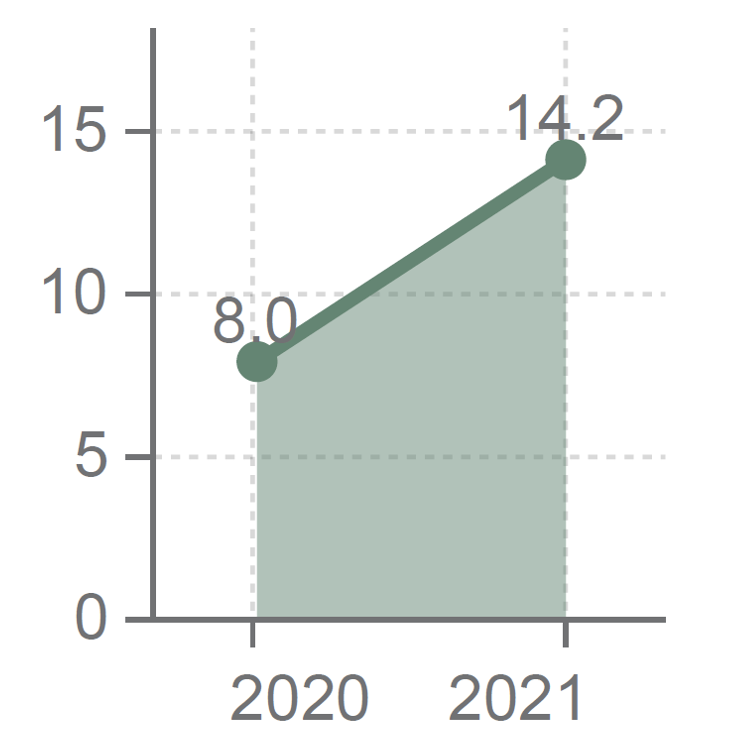
The team at Ann Arbor SPARK understands the concerns of businesses when it comes to relocation decisions, and the challenges site selectors face during the search. SPARK is dedicated to helping companies looking to grow, expand, or relocate find a space that suits their needs and has the resources and connections to facilitate your site selection.
In addition to the resources provided by SPARK’s business development and entrepreneurial services teams, Melissa Sheldon, director of research for SPARK, analyzes commercial real estate trends in the region for two fundamental reasons. First, by understanding these trends we can provide the best possible advice to companies looking for space (those already local and those new to the area). Second, these trends are an important indicator of our region’s economic health. Swisher’s report focuses specifically on the Ann Arbor market, which is very different from other areas in southeast Michigan but can sometimes help predict market shifts in neighboring areas.
Key Takeaways
Swisher Commercial recently released its 2021 Year-End Vacancy Report. Swisher has produced an annual survey of vacancy rates for both office and flex space in the Ann Arbor area for 29 years now and it remains the most comprehensive public snapshot of commercial real estate vacancy in our area.
Here are Melissa’s key takeaways and a few of the most compelling data visualizations from Swisher’s report. The full report is available here.

The ongoing pandemic continues to impact the demand for office and flex space throughout the Ann Arbor region as remote working continues to be a viable option for many companies, but vacancy rates are still far below those reported during the Great Recession.

- Swisher surveyed 306 buildings of 5,000 square feet or larger, totaling nearly 11.7 million square feet. The total vacancy rate for office and flex space is 10.3 percent, up from 8 percent in 2020.
- Many companies continue to offer remote working options and some companies that are in owner-occupied spaces have offered vacant space for lease as they have found they can operate with less office space.
- As companies continue to evaluate remote working options and the need for office space, vacancy rates will continue to fluctuate, but there are many collaborative opportunities and co-working spaces that now exist as a result.
The only sub-market in Ann Arbor with a vacancy rate that decreased from 2020 to 2021 is north Ann Arbor, but the vacancies may just be delayed due to longer-term leases.

- Vacancy rates increased from 2020 to 2021 throughout Ann Arbor areas except in the north office area. The north Ann Arbor area vacancy rate decreased from 7.0 percent in 2020 to 5.7 percent in 2021.
- While the vacancy rate decreased in north Ann Arbor from 2020 to 2021, Swisher reports that they are aware of several large tenants in the north office area that plan to move out of their space in 2022 when their lease term ends.
There was more stability and demand related to flex space than office space in 2021 due to the in-person nature of work being done in flex spaces.
- Flex/shop suites of a smaller size had the highest demand in 2021, contributing to the west flex-only area of Ann Arbor having the lowest vacancy rate in the market (2.8 percent, down from 4.5 percent in 2020).
- Similarly, flex space in the south Ann Arbor area was mostly occupied throughout the year but increased from 3.1 percent in 2020 to 6.5 percent in 2021 due to one large flex building becoming vacant during Q4.
- The dominant sector for building sales in 2021 was light industrial and flex space.
The downtown office area vacancy rate increased from 8.0 percent in 2020 to 14.2 percent in 2021 while the cost of office space has remained steady.

- Swisher reports that landlords with space in downtown Ann Arbor have not widely decreased their asking rates on vacant office suites.
- It is possible landlords will offer incentives in the future to try draw tenants back to the downtown office area but plans for landlords to offer incentives or lower lease rates are unknown at this time. Further complicating this issue is the fact that it is not known what the long-term effects of the pandemic will be in any of the sub-markets of commercial real estate in and around Ann Arbor.
In summary, the overall commercial real estate market in the Ann Arbor region remains strong and adaptable, but the downtown office area is experiencing challenges as the pandemic persists. Due to the increased cost of real estate and construction in general, many businesses are bringing new life to previously vacant existing spaces throughout the region, standing up co-working spaces in their owner-occupied buildings, or implementing other creative and collaborative solutions related to their needs for physical space. As 2022 unfolds, we will continue to monitor these trends to help businesses thrive in our region. If your company is looking for space in the Ann Arbor region, start by contacting Phil Santer, senior vice president of business development. You can also view a list of available commercial properties here.